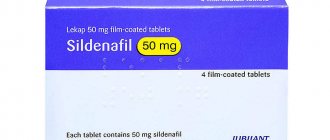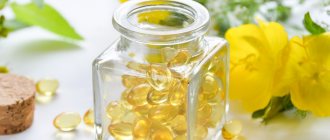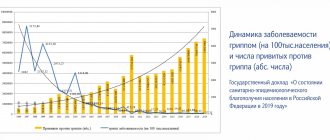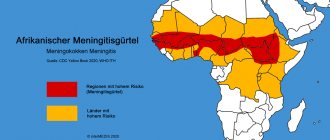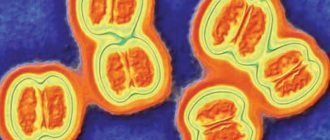Estrogen is one of the main hormones in the female body, but, unfortunately, after about 37 years, its level begins to decline. From this time on, aging processes become noticeable: skin tone decreases, wrinkles begin to form, because it is estrogens that regulate the activity of collagen synthesis, the main structural protein of the body. By about 45 years of age, sex hormones become so scarce that their deficiency begins to clearly affect the internal and external state of a woman. It is logical to assume: in order to maintain health, youth and beauty, estrogen must be taken from somewhere. And here phytoestrogens and synthetic estrogen (hormonal therapy) come to our aid.
“Phytoestrogens are plant compounds that are close in molecular structure and chemical action to the main estrogens of the female body - estradiol and estrone,” says Tamara Gelashvili, endocrinologist, therapist, andrologist and expert of the Lignarius brand . “They interact with the same receptors, but their influence is less than that of “natural” ones. Phytoestrogens can also have an anti-estrogenic effect - reduce the effect of female sex hormones on the body. Like other hormones, estrogens bind to receptors according to the key-lock principle, when the protrusions and depressions in the spatial structure of the hormone exactly correspond to the “relief” of the receptor. Thanks to this, hormones “recognize” and activate the necessary receptors. Phytoestrogens are close in structure to real estrogens, so they sometimes manage to activate their receptors, playing the role of a “master key” to the lock.”
Groups of phytoestrogens
Today, the following groups of natural phytoestrogens are distinguished.
- Coumestans (coumaric derivatives) : specifically coumestrol, which belongs to the class of cyclic esters of carboxylic acids (lactones). Coumestrol is found in clover, alfalfa, soybeans, regular beans, and most cruciferous crops.
- Isoflavones: genistein, daidzein, equol (a metabolite of daidzein), biochanin A, formononetin (biochanin B), glycitein, prunetin, irigenin. Contained in the same soybeans, clover, alfalfa sprouts, sophora, tiger lily rhizome, etc.
- Lignans: metairesinol, secoisolariciresinol, hydroxymetairesinol, syringaresinol, sesamin are derivatives of phenylalanine and are part of the walls of plant cells. Secoisolariciresinol (in diglucoside form) is particularly found in flax, sesame, sunflower and pumpkin seeds. Entering the body, under the influence of colon bacteria, lignans are transformed into active metabolites - enterolignans - enterodiol and enterolactone.
When are phytoestrogens prescribed?
After 50 years, many women begin to complain of irritability, lethargy, fatigue, depressed mood, hot flashes, palpitations and other unpleasant symptoms of menopause. One of the modern trends in the treatment of menopausal disorders is hormone replacement therapy. However, taking hormonal drugs during menopause sometimes leads to serious side effects. Therefore, women often abandon these drugs and resort to the help of phytoestrogens.
“The doctor decides on the advisability of therapy together with the patient, based on her condition, after tests,” says our expert. - Of course, they mainly take into account the manifestations of estrogen deficiency, as well as subsequent complications, for example, osteoporosis. Modern medicine strives for disease prevention, which is very important for combating the complications of menopause. Therefore, I recommend starting treatment with phytoestrogens in the premenopausal period. Since during menopause there is a pronounced decrease in the concentration of hormones, plant substances do not suppress their work (they do not act as antiestrogens), that is, for women after 40 years of age, their use is relatively safe.”
Basics of treatment with antitumor drugs - estrogens
All antitumor drugs, including estrogen drugs, are prescribed only by an experienced oncologist.
The use of antitumor drugs is also under the strict supervision of a physician. This is due to the high toxicity of cancer treatments, as well as the high risk of interaction with other drugs or food.
Estrogen preparations are used in the form of oil solutions intramuscularly. The duration of estrogen treatment is determined by the doctor depending on the form and severity of the disease.
Phytoestrogens: pros and cons
It has been proven that phytohormones can potentially have the following positive effects on a woman’s body:
- reduce the symptoms of menopause and act as a mild form of hormone replacement therapy;
- reduce blood cholesterol and blood pressure;
- reduce the risk of developing osteoporosis.
Like real estrogens, phytoestrogens affect the functioning of certain enzymes found in the skin. In particular, they are able to block 5-alpha reductase. This enzyme converts the male sex hormone testosterone into the more active dihydrotestosterone (DHT). Excess DHT causes gradual atrophy of hair follicles (not all, but only DHT-sensitive ones), which leads to thinning hair and its replacement with vellus hair. “In addition, DHT stimulates sebum production,” says the expert. — Increased activity of 5-alpha reductase in the skin is one of the causes of oily seborrhea and acne. Therefore, phytoestrogens are successfully used in the treatment of these diseases, as well as androgenic alopecia. Most phytoestrogens act as weak antiandrogens, that is, they reduce the influence of male sex hormones.” This makes them useful for juvenile acne, when excess androgens overstimulate the sebaceous glands, and for hormone-dependent alopecia.
It must be said that phytoestrogens therapy also has its opponents. It is believed that these substances can increase the risk of developing hormone-dependent tumors. Could phytoestrogens act in a similar way or be dangerous to a woman’s health for other reasons?
As soon as the world learned about hormone-dependent breast cancer, women became afraid to take estrogen. “On the one hand, this fear is justified, on the other hand, it is not,” says Tamara Gelashvili. — Even in hormonal therapy with estrogen during menopause, there is much more benefit than harm. Of course, there are risk factors such as age, heredity, etc. However, it is worth considering that the risk of breast cancer is no less when consuming alcohol (3 to 6 alcoholic drinks per week) than consuming hormones. Phytoestrogen, as has been said more than once, is not a synthetic hormone; it is weakly active and theoretically cannot lead to cancer. Scientific research on this issue is ongoing, and I am sure that over time we will receive an accurate answer. At this point, the issue remains controversial."
Phytohormones also have a number of side effects. This:
- negative consequences for the fertility of young women;
- development of ovarian pathologies, in particular their polycystic disease;
- worsening cognitive disorders in postmenopausal women, especially against the background of problems with the thyroid gland.
As you can see, phytoestrogens have both positive and negative sides. Whether they will benefit you should be determined by a specialist. Do not prescribe the drug yourself. “It’s important to understand that you can’t take anything, even vitamins, without a doctor’s prescription,” says our expert. — For a positive effect of therapy, all recommendations must be based on the results of examinations and tests. Self-prescription of dietary supplements with low concentrations of phytoestrogens will only lead to a waste of money - you need to know the initial level of estrogen in the blood in order to choose the right drug and determine the dosage. It will be more economical and effective to go to the doctor and start taking the medication that is right for you.”
Drugs for stimulating ovulation and superovulation in ART programs
Antiestrogens
Clomid
(clomiphene, clomiphene citrate, clostilbegide). Available in 50 mg tablets. In small doses, it enhances the secretion of gonadotropins (prolactin, FSH and LH), stimulates ovulation; in high doses inhibits the secretion of gonadotropins. It is used both to stimulate ovulation under ultrasound control and in IVF protocols.
Human menopausal gonadotropins
Menopur
, containing 75 units of FSH and 75 units of LH (Ferring, Germany). Currently, there is Menopur - Multidose, containing 1200 IU of FSH and 1200 IU of LH, with the ability to dose the drug using a convenient handle.
Menogon
, containing 75 units of FSH and 75 units of LH (Ferring, Germany).
Alterpur
- urofollitropin (FSH), available in doses of 75 and 150 IU; (Ibsa, Switzerland). e
Merional
(Ibsa, Switzerland), The ratio of the biological activity of follicle-stimulating hormone (FSH) and luteinizing hormone (LH) is 1:1. Available in doses of 75IU and 150IU (the dose is measured by FSH).
Bravel
(Ferring, Germany) - urofollitropin (highly purified urofollicle-stimulating hormone), available in a dose of 75 IU FSH.
The previously existing menotropins - Pergonal, Metropin, Humegon - are not currently produced.
Recombinant gonadotropins
These are drugs with an increased degree of purification compared to urinary analogues.
FSH preparations
Gonal F
– alpha-follitropin (Merck Serono, Switzerland), available in 75, 300, 450, 900 IU in the form of a syringe pen that is convenient for use and dosage.
Puregon
— beta-follitropin, (MSD, USA), available in 100 IU and in the form of cartridges for pens in 300, 600 and 900 IU
Elonva
— corifollitropin alfa (MSD, USA) — recombinant FSH of prolonged action
LH drugs
Luveris
— lutropin alfa (Merck Serono, Switzerland), available in a dose of 75 IU.
Preparations containing rFSH and rLH
Pergoveris
(Merck Serono, Switzerland), contains 150 IU FSH AND 75 IU LH.
Triggers of ovulation (human chorionic gonadotropins)
Horagon
, containing 1500 and 5000 IU (Ferring, Germany)
Decayed
, containing 1500 and 5000 IU (MSD, USA)
Profasi
, containing 2000 and 5000 IU (Merck Serono, Switzerland)
Ovitrel
, containing 6500 IU (Merck Serono, Switzerland)
How to add phytoestrogens to your diet
A certain amount of phytohormones is found in a number of products. It must be said that they cannot completely compensate for the deficiency of estrogen during menopause, but they have a positive effect on the woman’s body. What foods should you look for phytoestrogens in?
- Flax seeds. This is product No. 1 in terms of the content of plant hormones (lignans group) with estrogenic activity. In addition to the hormonal effect, they have many other beneficial properties: antitumor, cleansing, antioxidant, choleretic, hepatoprotective, antithrombotic.
- Sesame and sunflower seeds . Contains the plant hormone lignan. Add them to your salad during lunch or dinner. The daily dose is 20 g (about 4 teaspoons or 2 tablespoons).
- Legumes: green peas, beans, chickpeas, soybeans, lentils. All of these plants contain isoflavonoids. “Introduce soy into your diet carefully, carefully choosing a reliable manufacturer: 90% of this product is genetically modified,” advises Tamara Gelashvili. — If you are not sure that soy is completely natural, do not take risks. Better pay attention to another legume - lentils. This is the leader in vegetable protein content, and it also contains tryptophan. In the body, it turns into serotonin, a hormone of joy that protects against depression.”
- Wheat bran. Check out this inexpensive and healthy option for supplementing a healthy diet. Wheat bran is the husk of wheat grains. They are rich in B vitamins, potassium and magnesium. This is an excellent phytosorbent. Bran cleanses the body, normalizes microflora and intestinal function, improves metabolism, relieves intoxication due to dietary errors and taking a large number of medications, reduces hunger and can be used in weight loss programs.
- Coffee beans. “Coffee is the most popular biologically active drink of plant origin, rich in bioflavonoids,” says our expert. — Studies show that women who drink up to 300 ml of coffee per day increase their estrogen levels by 70%. But moderately elevated levels of this hormone make it difficult to lose weight. Decide for yourself what is more important to you: being slimmer or looking young longer. Nutritionists recommend reducing the consumption of natural grain (not instant!) coffee to 1 cup in the morning, then it will only bring benefits.”
- Apricots. Among fruits, they are the leaders in lignan content. They can be eaten fresh or dried (apricots, dried apricots). Apricot pulp contains a lot of pectin (phytosorbents) and provitamin A (beta-carotene), which is important for healthy skin and hair.
- Brewer's yeast (dry). A storehouse of microelements: phosphorus, potassium, sodium, magnesium, copper, selenium, sulfur and zinc, a valuable source of B vitamins and essential amino acids. Brewer's yeast is a biologically active product containing natural estrogens, isoflavonoids and coumestans. Used for decreased immunity, hormonal imbalance, skin problems, hair loss and brittle nails.
- Medicinal herbs. Estrogens are found in red clover, sage, hops, arnica, chamomile, stevia... They can be brewed as tea and drunk 1/3 cup throughout the day.
- Parsley, carrots, cabbage. These vegetables contain phytoestrogens, but it makes sense to consume them only fresh. Cooking destroys the beneficial substances in these crops, including phytoestrogens.
Hormone replacement therapy in menopause
P
Since most diseases in menopause occur as a result of a decrease and “switching off” of ovarian function, the use of hormone replacement therapy (HRT) seems logical.
The purpose of HRT
is to pharmacologically replace the hormonal function of the ovaries in women experiencing a deficiency of sex hormones. It is important to achieve such minimally optimal levels of hormones in the blood that would actually provide a therapeutic and preventive effect for menopausal disorders with minimal side effects of estrogens, especially in the endometrium and mammary glands.
Before deciding on the type of HRT, the doctor must provide the woman with as much information as possible about the systemic effects of sex hormones and their deficiency, as well as the effectiveness of HRT. This allows you to obtain the woman’s informed consent to use HRT.
In recent years, there has been a trend towards early prescription of HRT (in perimenopause) in the following cases:
• early or premature menopause (38–45 years)
• long periods of secondary amenorrhea during reproductive age
• primary amenorrhea (except for Rokitansky–Küstner syndrome)
• artificial menopause (surgical, x-ray and radiotherapy)
• early vasomotor symptoms of menopausal syndrome in perimenopause
• urogenital disorders
• presence of risk factors for osteoporosis and cardiovascular diseases, Alzheimer's disease.
In postmenopause, it is customary to distinguish short-term and long-term indications for HRT (Scheme 1).
Basic principles of using HRT:
1. Use only “natural” estrogens and their analogues, which are much weaker than synthetic ones, have a minimum of side effects, and are metabolized in the body like endogenous estrogens.
1. The use of only “natural” estrogens and their analogues, which are much weaker than synthetic ones, have a minimum of side effects, and are metabolized in the body like endogenous estrogens.
2. Estrogens are prescribed only in low doses corresponding to the level of estrogen in the early proliferation phase of the menstrual cycle of young healthy women, that is, the minimum optimal doses are prescribed.
3. Mandatory combination of estrogens with progestogens (progesterone and its analogues) to protect the endometrium from hyperplastic processes.
4. Women with a removed uterus are given monotherapy with estrogen drugs in intermittent courses or continuously.
5. To ensure the prevention of late metabolic disorders (osteoporosis, ischemic heart disease, atherosclerosis, Alzheimer's disease, etc.) and the therapeutic effect for genitourinary disorders, the duration of HRT should be at least 5–7 years or more.
There are the following main types of HRT:
• Estrogens – monotherapy
• Combination of estrogens with progestogens in various modes (Klimonorm, etc.)
• Combination of estrogens with androgens
• Less commonly, monotherapy with progestogens or androgens.
“Natural” estrogens
- These are estrogen preparations, which are identical in chemical structure to estradiol, synthesized in the body of women. Thanks to modern technologies, synthetic estradiol has been created, but its chemical structure is identical to natural one.
The following estrogen preparations are used in clinical practice:
1. Synthetic “natural” estradiol-17b.
2. Estradiol valerate, which undergoes biotransformation in the liver into estradiol.
3. Conjugated estrogens
are so-called natural estrogens. They do not contain human estrogens as they are obtained from the urine of pregnant mares. Therefore, it is more correct to use the term conjugated equi-estrogens (CEE).
Over the past 20–25 years, HRT preparations containing estradiol-17b and estradiol valerate have dominated in Europe. The optimal doses of estrogen drugs have been established for the treatment of typical menopausal syndrome and for the prevention of atherosclerosis and osteoporosis (Table 1). It is advisable to prescribe the same doses of estrogens for other indications.
There are two main routes of administration of estrogen drugs - enteral and parenteral (Scheme 2).
Characteristics of oral estrogens:
• simplicity and ease of use
• simplicity and ease of use
• positive effect on some indicators of the blood lipid spectrum (decrease in total cholesterol; decrease in low-density lipoprotein (LDL); increase in high-density lipoprotein (HDL); decrease in the level of LDL oxidation)
• positive effect on metabolism in the vascular endothelium (synthesis of nitric oxide, prostacyclin, etc.), which helps reduce vascular resistance
• possible incomplete absorption of oral estrogens in the gastrointestinal tract, especially in case of diseases
• active metabolism when passing through the liver
• an increase in the concentration of estrogen in the liver can stimulate the synthesis of various biologically active substances: coagulation factors, angiotensin, sex steroid-binding globulin, and thyroxine-binding globulin
• patients sometimes do not respond to oral HRT, which may be due to altered sensitivity to minor fluctuations in estradiol levels or active “binding” of estradiol by proteins, as well as impaired absorption in the gastrointestinal tract.
The above factors can affect the pharmacokinetics of hormonal drugs and cause fluctuations in their levels in the blood. In diseases of the liver and gastrointestinal tract, the absorption and metabolism of oral hormonal drugs is disrupted. Still, it should be noted that tablets are a more traditional form of medication for patients. They are easy to use and cheaper than other forms. And finally, quite a long experience of their use has been accumulated.
The parenteral route of administration has the main goal of delivering medicinal substances to the internal environment of the body or directly to the pathological focus without loss. Estrogens, which are lipophilic, can penetrate the skin, be absorbed into the blood and have systemic effects. Special therapeutic systems have been developed to ensure transcutaneous delivery of drugs into the systemic circulation.
Indications for parenteral administration of estrogens for HRT:
• insensitivity to oral HRT
• diseases of the liver, pancreas, gastrointestinal malabsorption
• coagulation disorders, history of thromboembolism
• hypertriglyceridemia before and against the background of oral, and especially conjugated equiestrogens
• hypertension
• hyperinsulinemia
• increased risk of cholelithiasis
• smoking
• migraine headaches
• to reduce insulin resistance and improve glucose tolerance
• to improve the acceptability of HRT.
Transdermal administration of estrogens avoids their passage through the liver and, accordingly, avoids metabolism in it. In addition, a relatively stable level of estradiol in the blood is maintained without the early peak observed with oral administration.
The patch is glued on and the gel is applied to the skin of the thighs, abdomen or buttocks, alternately. The degree of absorption of the gel depends on the area of its application. The thigh area has been found to be more permeable to estradiol gel than other areas, such as the shoulder.
Local vaginal use of estrogens is indicated for genitourinary disorders. Our country has accumulated extensive clinical experience in the use of estriol preparations in the form of suppositories and ointments. Estriol has a pronounced local colpotropic effect with a slight systemic effect on the endometrium.
For women with an intact uterus, the administration of estrogens is combined with progestogens
to avoid the development of hyperplastic processes and endometrial cancer.
The terms “progestogens”, “progestins”, “gestagens” are synonyms and are used for all steroids that are used in clinical practice to replace endogenous progesterone.
Progestogens
added to estrogens in a cyclic (10–12–14 days) or continuous mode. They may have metabolic side effects on lipoproteins and carbohydrate metabolism and thus partially offset the beneficial effects of estrogens on the risk of cardiovascular disease.
Progestogens are divided into 2 main groups
(Table 2):
I – progesterone and progesterone-like compounds;
II – derivatives of 19-nortestosterone.
Biological effects of progestogens
The general basic property of progestogens is the ability to cause secretory transformation of the endometrium, which proliferates under the influence of estrogens. In addition, progestogens may have other effects: estrogenic, antiestrogenic, androgenic, antiandrogenic, antigonadotropic, glucocorticoid-like and ACTH-like (Table 3).
Derivatives of 19-nortestosterone have a pronounced progestogenic effect, as well as antiestrogenic and androgenic.
The effect of progestogens on the endometrium also depends on the type, dose and duration of the effect of estrogens in HRT. Table 4 presents the optimal doses of progestogens and the duration of their use for real endometrial protection.
Epidemiological studies have shown that estrogens reduce the risk of myocardial infarction by 25–40%. The addition of progestogens to estrogens, mainly in a cyclic mode, improves results - reducing the risk of myocardial infarction by 40-50%.
Hormone replacement therapy regimens using progestogens
This therapy is prescribed to women with an intact uterus. There are two main modes of combined (estrogens with progestogens) HRT:
I – combination therapy (estrogens with progestogens) in a cyclic mode, indicated for perimenopausal women (Klimonorm, Klimen, Cyclo-Proginova)
II – combination therapy (estrogens with progestogens) in a monophasic continuous mode.
Main contraindications for HRT:
• untreated breast and endometrial cancer, ovarian tumors
• renal and liver failure
• acute thrombosis, thromboembolism
• meningioma (gestagens are contraindicated)
• uterine bleeding of unknown origin
• severe forms of diabetes.
Examination before prescribing HRT:
• study of anamnesis (taking into account the above contraindications)
• gynecological examination with oncocytology
• Ultrasound of the endometrium with assessment of endometrial thickness
• palpation of the mammary glands and mammography
• blood lipids, blood pressure; according to indications: TSH, T3, T4 study, ECG, hemostasiogram
• osteodensitometry in perimenopause, if there are risk factors. It is advisable for all postmenopausal women.
The first control should be prescribed after 3 months, subsequently every 6 months. Mandatory annual mammography, ultrasound of the genitalia, oncocytology and osteodensitometry for osteopenia and/or osteoporosis.
It should be noted that over the past 10 years the number of contraindications has been decreasing, and the former absolute contraindications to HRT have become relative. This was largely facilitated by the creation of new forms of (parenteral) drugs for HRT.
Side effects of HRT:
engorgement of the mammary glands, loss or increase in body weight (in 4–5%), nausea, pastiness, fluid retention, headaches, excessive secretion of cervical mucus, cholestasis, decreased or increased libido. If there is engorgement of the mammary glands, treatment is not canceled, but Mastodinon or Klamin is prescribed.
Efficacy of HRT
can be considered using the example of the two-phase drug
Klimonorm
, because it became one of the first drugs in Russia used for HRT. Most domestic gynecologists already have experience in its use.
Klimonorm is a drug for HRT that can be used long-term where not only the treatment of acute menopausal disorders is preferred, but there is also a need to take into account its beneficial preventive effect. Klimonorm is a suitable treatment for women in perimenopause, when maintaining a regular menstrual cycle is still important. It may also be recommended for women with ovarian wasting syndrome who have undergone oophorectomy.
Klimonorm can be included in the number of priority medications that will provide a woman with long-term prevention during menopause. As a result of clinical studies conducted by employees of the Scientific Center for Obstetrics, Gynecology and Perinatology of the Russian Academy of Medical Sciences, it was shown that Klimonorm effectively reduces the frequency and severity of menopausal syndrome in perimenopausal women; Hormone replacement therapy with Klimonorm does not contribute to weight gain and increased blood pressure; ensures regularity and stability of the menstrual cycle in perimenopausal women, which is a real prevention of the development of hyperplastic processes in the endometrium and is confirmed by ultrasound monitoring data and histological examination of the endometrium.
Klimonorm has no serious side effects and does not adversely affect blood biochemical parameters. During therapy, there was an increase in bone mineral density by 2.6% per year.
Prophylactic use of HRT
It is indicated if a woman wishes to receive HRT to improve the quality of life, prevent cardiovascular diseases and osteoporosis in the absence of contraindications.
Estradiol valerate + levonorgestrel –
Klimonorm (trade name)
(Shering AG)
The effect of phytoestrogens on men
Many men try to avoid products with phytoestrogens, fearing their negative effects on the body. Is this justified? “A 2010 study by Hamilton-Reeves et al found that isoflavone and soy foods in men’s diets did not change their testosterone levels,” says Tamara Gelashvili. — There were also no changes in sperm morphology, concentration, number or motility. It was believed that plant estrogens had a very strong feminizing effect on young boys, especially during the neonatal period and puberty. Therefore, boys and women during pregnancy were advised not to abuse products that contain them. But a study by Merritt and Hanks, which was published in 2004, did not confirm this. Experts have concluded that feeding children soy formula does not cause problems in the future. There were no abnormalities in sexual development, behavior, or the functioning of the immune system.”
Are cosmetics with phytoestrogens beneficial?
Many cosmetic brands produce products with phytoestrogens to care for aging skin. But can they really slow down the decline process? “If we are talking about a rejuvenating effect, then, alas, phytoestrogens are ineffective here,” says our expert. — Unlike steroid hormones, they are not absorbed through the skin and do not have a systemic effect. And since the substances contained in plant extracts themselves are inactive and the bulk of compounds with estrogen-like activity are formed in the intestines, you should not expect any pronounced effect from phytoestrogens applied to the skin. But in cosmetics for problem skin and products against baldness, they are useful as antioxidants and as inhibitors of the enzyme that stimulates sebum production.”
Find out also about the possibilities of hormone therapy during menopause.
